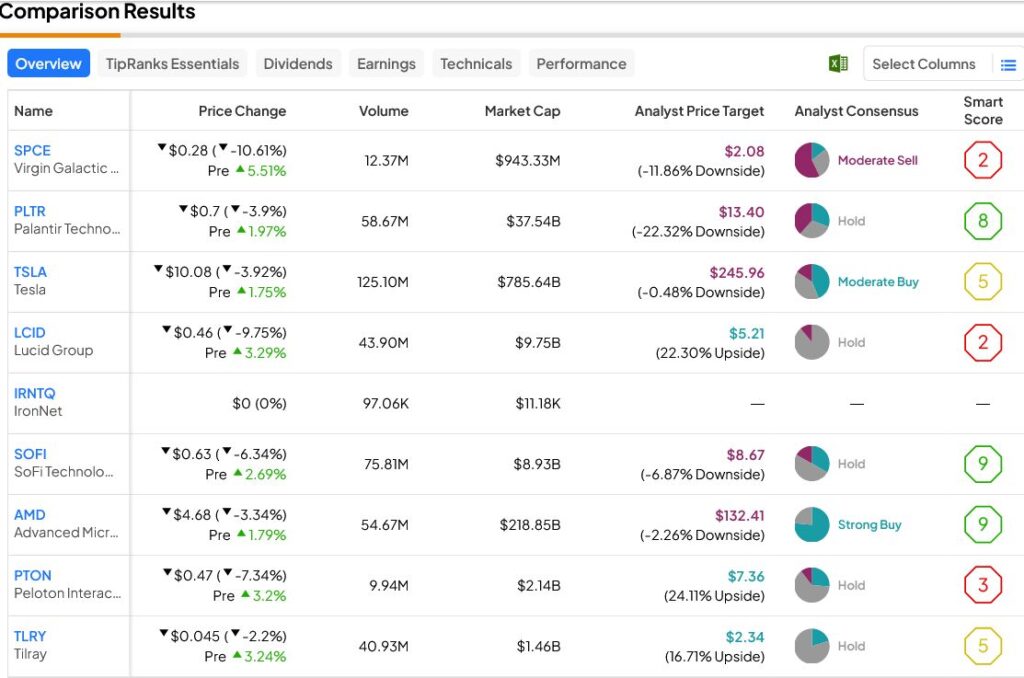The young stock market participants ignited a Meme-trading mania during the Covid-19 years. With the pandemic and the Meme stocks becoming a thing of the past, a new generation of discerning young investors is emerging. They are now learning to take the markets seriously, as reflected in their choice of stocks.
The Memoires of the Meme Mania
During the Covid-19 lockdowns, droves of young traders descended on the stock markets, overturning the commonly held assumptions and demonstrating adventurous, and in many cases, reckless behavior. Gen-Z and younger Millennial newcomers spurred a frenzy around Meme stocks, i.e., stocks that have gone viral thanks to their popularity on social media, with the stock-buying fueled by the pandemic-era government aid checks.
The rise of Meme trading was facilitated by the online trading platform Robinhood (HOOD), with its zero-minimum, fee-free, and fractional share buying plans making trading easy. Millions of bored, locked-up-at-home young people gathered information on social media, turning to a new, exciting online game: stock trading. According to estimates, around $300 billion of the stimulus money found its way into the stock markets, adding a lot of fuel to the fire of the 2020/21 stock market surge.
The investing world watched in awe as stocks of unprofitable, unknown, or outdated companies like GameStop (GME), AMC Entertainment Holdings (AMC), Blackberry Limited (BB), and Clover Health (CLOV), surged hundreds of percent within days following the short squeeze generated by the fun-loving newcomers. As the Zoomers saw their Memes surge at the cost of the hedge funds which held large shorts on these stocks, they also got a taste of “social justice” of a kind, further propelling the Meme craze.
Still Meme’ing, at a Much Smaller Scale
But all things come to an end, eventually. As the pandemic and the federal checks became a thing of the past, Gen Z traders went back to work or college, leaving them with much less time and money to play with the markets. At the same time, the Federal Reserve embarked on a mission to squelch the surging inflation, depressing the economic outlook and pulling down the markets. Meme traders suffered some painful losses, with many of their darlings falling 70%-99% from peaks.
With no free money sloshing around and economic uncertainty reaching historically high levels, the Zoomer traders that have stayed to play mostly shifted their attention to more logically explainable, even if still risky choices, such as Peloton (PTON), Lucid (LCID), and SoFi (SOFI). Still, the Meme-trading lives on, as witnessed by the surge in stocks of the bankrupt WeWork (WEWKQ) and Yellow (YELLQ) at some point in November.
However, Meme trading has subsided to such insignificant proportions that Roundhill Investments announced in November 2023 the closure of its Meme-centered ETF, which it introduced just two years ago. The Roundhill MEME ETF has lost almost 50% from its grand opening in December 2021, even after accounting for 2023’s gain of 42%. The Meme ETF attracted just $2.6 million in assets under management, underscoring the fact that the reckless days of Meme trading have passed, at least for now.
The Great Transformation
All this doesn’t mean that individual investors have pulled away from the markets. On the contrary: they continue to wield tremendous power over markets. Trading stocks is still easier than ever, and the impact of social media and various influencers is stronger than ever. Net retail inflows into the stock markets stood at $256 billion at end-October 2023, well on the path to reach or even surpass their 2022 full-year record of $301 billion. In the eight weeks through mid-December, retail investors bought most stocks since March 2022.
However, Gen Y and Z market participants are changing their behavior. Instead of seeing themselves as a part of a kind of David and Goliath story, where they gather to defy the billionaires of Wall Street, they are joining the ranks of other individual investors. Zoomers have learned major investing lessons; they are now much more aware of their risk tolerance and careful about the sources of stock information, while contemplating portfolio diversification and risk management.
Instead of throwing money in unison at moribund stocks in the hopes that someone else will be left holding the bag, young Meme traders are turning from gamblers into investors, paying attention to traditional investment strategies based on companies’ finances and business prospects, as well as stocks’ technical analysis and other important factors.
Do Influencer Stocks Pay Dividends?
Although many things have changed tremendously within the past two years, one thing has remained constant: the power of social media. Young market participants don’t tend to read banks’ research or Wall Street analysts’ memos; most of them don’t watch any money-management or investing TV programs and don’t pay for Bloomberg subscriptions. Instead, they turn to TikTok, Reddit, Discord, X (formerly Twitter), and Instagram for investment advice from financial bloggers held in high esteem by Gen Zeers and younger Millennials.
The move to solid investment behavior is reflected in the lists of stocks trending on social media platforms. Many of the names on these lists are tech growth companies, but of course, this is to be expected from the digital natives. However, the most popular stocks now also include technology megacaps, retailers, banks, pharma giants, and even dividend-paying blue chips.
Thus, the most-trending stock list on Reddit’s WallStreetBets forum, which was the hotbed of the 2021 Meme-mania, now includes a diverse collection of stocks, such as Cloudflare (NET), Novo Nordisk (NVO), Crowdstrike (CRWD), NVIDIA (NVDA), Microsoft (MSFT), Kohl’s (KSS), Unity Software (U), and Bank of Nova Scotia (BNS).
Meanwhile, the ten most popular stocks on Instagram and TikTok, discussed by less experienced or aspiring investors, are Disney (DIS), Amazon (AMZN), Netflix (NFLX), Walmart (WMT), 3M (MMM), Microsoft (MSFT), Tesla (TSLA), Costco (COST), Nike (NKE), and Starbucks (SBUX). These companies belong to diverse sectors and display completely different characteristics, on the surface having nothing in common.
Instagram Stocks Need Analysis, Too
Notably, there is one common trait to all most-trending stocks: they belong to large, established companies, most of which are household names, underscoring a profound change that happened to young investors in the past two years. They still want to participate in the stock markets; but now they watch their step, giving preference to businesses they are familiar with, instead of gambling fits.
This is a most welcome development since in several years the whole retail stock market will be commanded by today’s college graduates. However, to get to the helm of investing, young market participants need to retain and increase their capital, which is impossible without taking the investing game seriously. The serious approach to investing isn’t built by blindly following an Instagram influencer’s advice but by applying research to their choice of stocks.
Stock analysis is not an easy task, especially for those new to the markets. However, to succeed, particularly in the era of heightened economic uncertainty, it is vital that investors check the companies’ financials, market position, earnings outlook, and other fundamental metrics. Thankfully, Gen Z investors are not alone on the battlefield: help is on the way.
At TipRanks, investors can leverage the existing analysis, utilizing research done by Wall Street’s leading analysts, collected and made accessible by TipRanks. TipRanks also has several additional tools, which employ the vast amounts of data and research stored in its database, helping discerning investors pick the best stocks according to their outlook, risk tolerance, and financial goals.
For example, investors can use the Top WallStreetBets Stocks comparison tool, filtering for fundamentals and analysts’ outlook:

Alternatively, investors can use the general TipRanks Stock Screener tool, slicing and dicing the database of stock analysis according to their preferences:

To conclude, we believe that following investing advice from a TikTok guru can be as profitable as buying a stock recommended by a JP Morgan (JPM) analyst; there is nothing wrong with preferring social media investing forums over reading Wall Street Journal articles. However, to turn in profits, young investors are advised to either perform a thorough analysis of the stocks they like or utilize the existing data and research to choose the winning trades.









